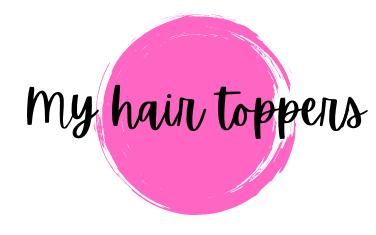All products recommended are independently selected by our editorial team. If you make a purchase through any of the links in this article, we may receive a small commission at NO extra cost to you.
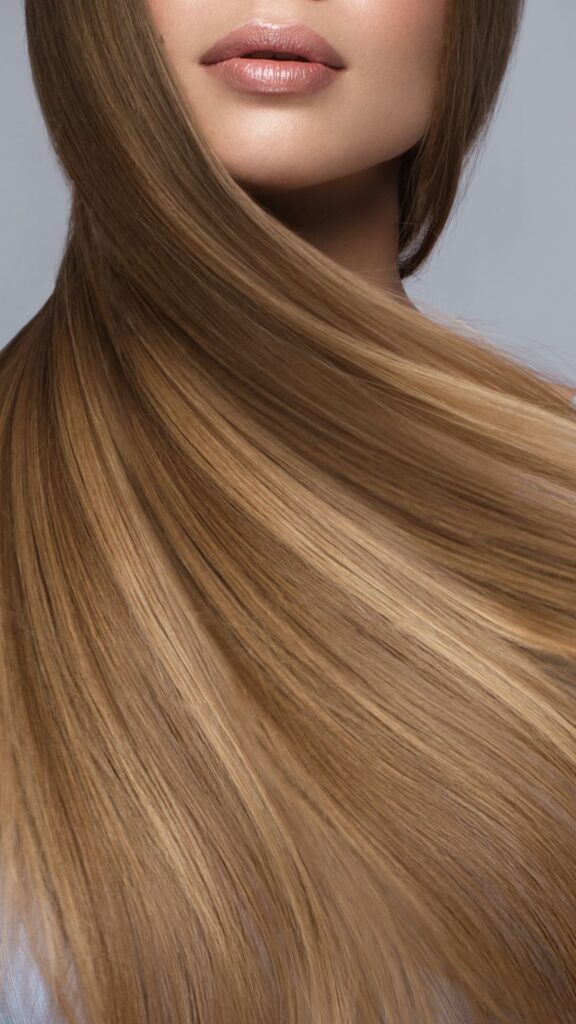
The Best Hair Extensions for Thin Hair 2023?
They are 30% lighter than traditional wefts
In recent years, hair extensions have become a popular way to change up one’s look without having to wait for the natural hair growth process. Yet, the most googled question is: “Do hair extensions damage your hair?” The answer, unfortunately, is yes if they are NOT installed by professional hands and if the type of extensions is not suitable for your hair type.
There are many ways you can apply hair extensions, today more than ever before, with the industry technology always advancing.
If thin and fine hair is your concern, your initial focus will likely be on identifying the best hair extensions for thin hair with minimal potential for harm.
Choosing Hair Extensions for Thin Hair: 3 must follow rules
When searching for friendly hair extensions for thin hair, my advice is to choose based on these 3 must follow rules:
1. Heat-Free: Finding extensions that require no heat for attachment is the best gift you can do to your thin hair. This method guarantees the absence of harm, saving your delicate strands.
2. Featherlight and Sleek: Opting for lightweight extensions is essential to prevent unwarranted strain on your naturally fine, thin hair.
3. Effortless Application and Removal: Prioritizing extensions that offer easy application and removal will alleviate stress on your natural hair.
Based on the above, and my own experience, the best hair extensions for thin hair are clip-in extensions.
Let’s understand why I say this:
Clip-in Extensions: These are temporary extensions that are attached to your natural hair using small clips. They are great for adding length or volume for special occasions or when you want a temporary change.
Clip-in extensions are easy to apply and remove, making them, in my opinion, the best hair extensions for thin hair and a great choice for beginners.
Clip-in extensions for thin hair Pros:
1. Easy and quick to apply, making them the best hair extensions for thin hair and beginners.
2. Low Commitment: Unlike permanent extensions, they offer flexibility as you can remove and reapply them anytime.
3. Great to add length, volume, and highlights to your bio hair.
4. Clip-in hair extensions, when used correctly will never ruin your hair as they are not permanent. You can take them off whenever you want!
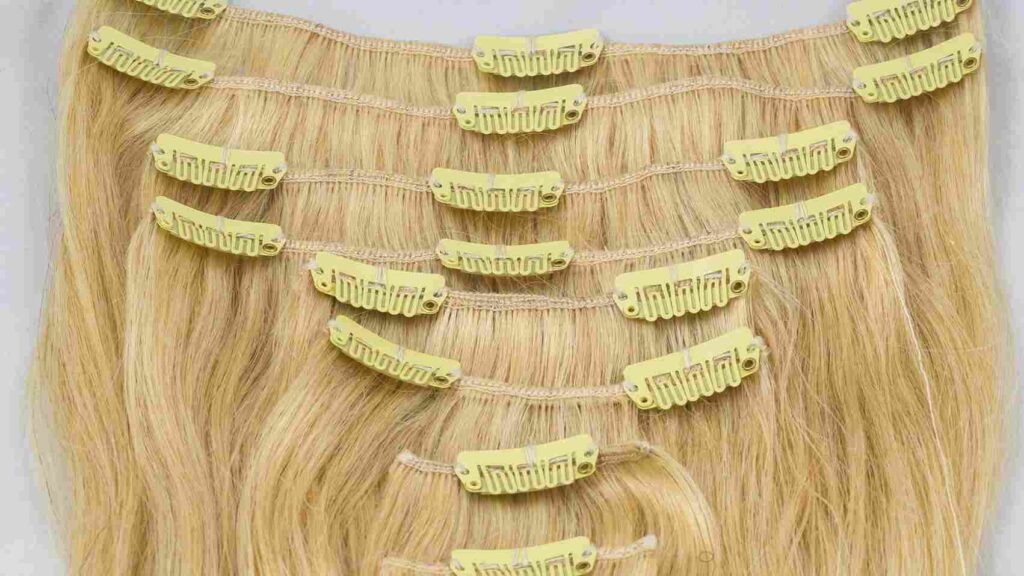
Of course, they also have some Cons:
1. Not suitable for long-term wear as they still may become uncomfortable if worn for extended periods. (Nevertheless, thin hair will benefit from the break when you take them off at night!)
2. Require daily removal and reapplication, which can be time-consuming. (Although, after a while, it will become easier as you will master your silks).
3. For a more natural and flawless appearance, it’s important to opt for a hair extension construction that is lightweight and thin. If not applied correctly, other kinds of extensions may not give you a seamless result.
With the above insights in mind, we introduce Bellami SILK SEAM HAIR EXTENSIONS: indeed the best hair extensions for thin hair in 2023.
Unveiling the revolutionary Invisi-Weft™ technology these extensions are both invisible and 30% lighter than traditional lace wefts.
Plus, Bellami offers a palette of 30+ colors and six lengths, making it so easy to find your perfect match!!
Bellami new Silk Seam™ extensions boast a smooth, luxurious texture that remains thick from root to tip. The fact that they are 30% lighter than the usual lace wefts, makes them the best hair extensions for thin hair to try in 2023!
4 Most Commonly Used Application Methods
If you’re still considering a different type of hair extension, we’ve compiled a list of the four most commonly used application methods along with their respective advantages and disadvantages.
#1. Tape-in Extensions:
Tape-in extensions are semi-permanent and they are applied using adhesive tape. The wefts of hair are sandwiched between sections of your natural hair, creating a seamless and natural look. They are quicker to apply and can last up to 6-8 weeks.
Pros:
1. Quick application process that can be done by a professional in a salon.
2. Blend seamlessly with your natural hair and lay flat against your scalp.
3. Can be reused multiple times with proper care and maintenance.
Cons:
1. Require professional application and removal.
2. May cause some discomfort or tension on the scalp if you have sensitive skin.
3. Regular maintenance and readjustments is an appointment that you need to be scheduled every 6-8 weeks.
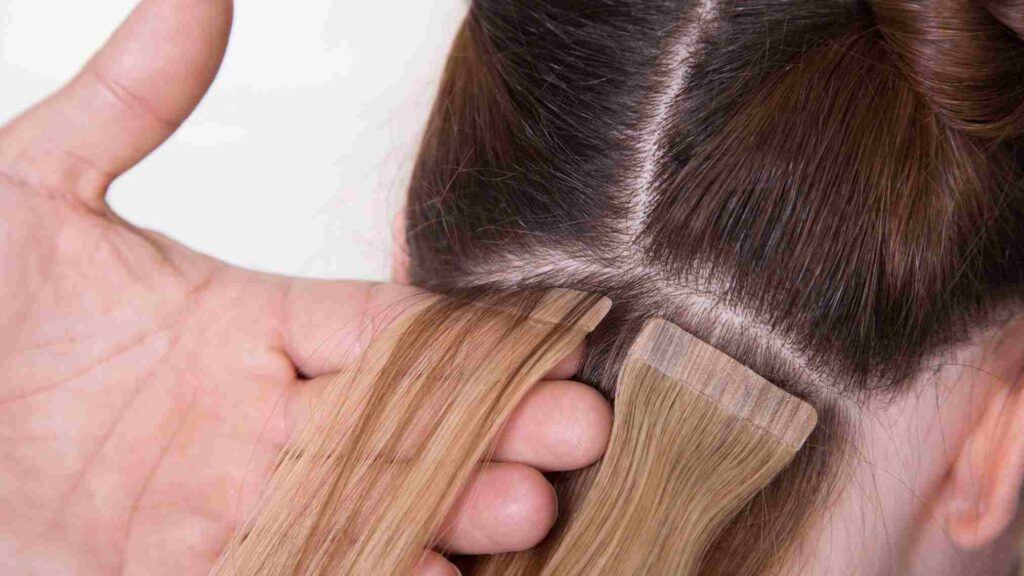
#2. Sew-in/Weave Extensions
This method involves braiding your natural hair and then sewing the wefts of hair onto the braids using a needle and thread. Sew-in extensions provide a secure and long-lasting result and can be worn for several weeks. However, they require a professional application and take ages to be installed.
Pros:
1. Provide a secure and long-lasting result that can be worn for several weeks.
3. Can add significant volume and length to your natural hair.
Cons:
1. Require professional application and removal, which can be time-consuming and rather expensive.
2. May cause tension or discomfort on the scalp due to the tight braiding.
3. The weight of the extensions can strain your natural hair, potentially leading to breakage if not properly cared for.
#3. Fusion Extensions
Fusion extensions use a keratin bond to attach the extensions to small sections of your natural hair. The keratin bond is heated and melted with your natural hair to create a secure attachment. Fusion extensions offer a natural look and can last for several months with proper care. However, they require professional application and removal.
I would not suggest these hair extensions if you have thinning hair!
Pros:
1. Provide a natural and seamless look, as the keratin bond is virtually undetectable.
2. Long-lasting and can be worn for several months with proper care.
3. Offer versatility in styling and allow for heat styling without damaging the extensions.
Cons:
1. Require professional application and removal, which can be time-consuming and costly.
2. The application process involves heat, which may cause damage to your natural hair if not done correctly.
3. The removal process can be time-consuming and may require the use of solvents, which can be harsh on your hair.
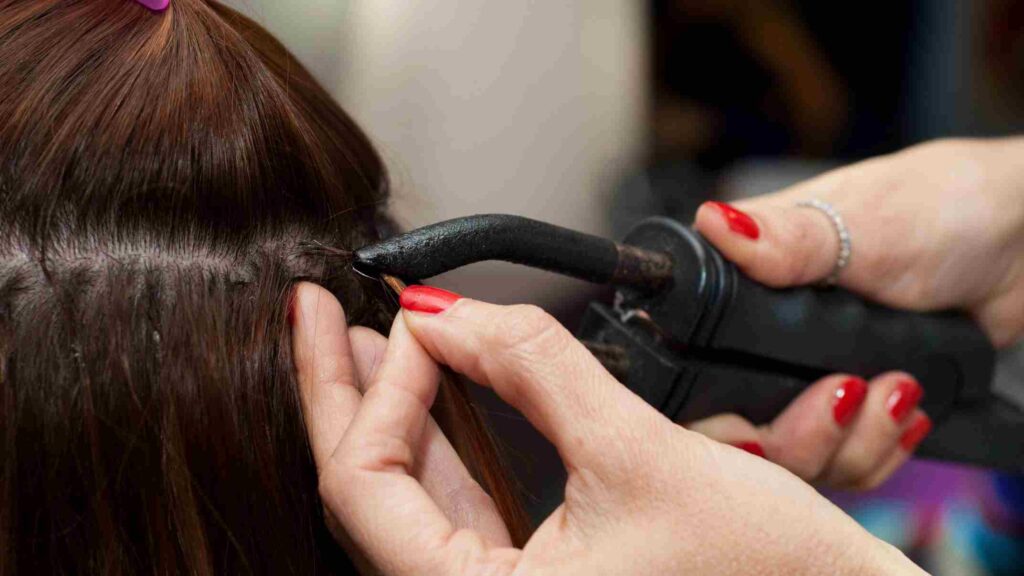
#4. Micro-link/Loop Extensions
Micro-link/Loop Extensions: Also called micro bead or micro ring extensions, this method involves attaching small sections of hair extensions to your natural hair using tiny metal rings or beads.
The extensions are clamped in place, providing a secure hold. Micro-link extensions are reusable and can last for several months, but they also require professional application and maintenance.
Pros:
1. Provide a secure and long-lasting hold without the use of heat or adhesive.
2. Can be reapplied and reused multiple times without causing damage to your natural hair.
3. Offer versatility in styling and can be easily maintained.
Cons:
1. Require professional application and maintenance.
2. The metal rings or beads may be visible if not properly hidden within your natural hair.
3. The application process takes so long longer compared to other methods, as each extension needs to be individually clamped in place.
These hair extensions are not ideal for thin hair!
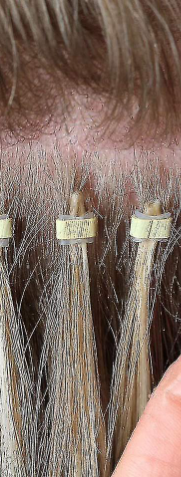
What Are the Risks of Hair Extensions Gone Wrong? 15 Possible Outcome
Please be cautious of the potential side effects that may arise from poorly installed hair extensions. We highly recommend seeking the assistance of a professional to prevent any regrets in the future. Here are 15 possible side effects to keep in mind:
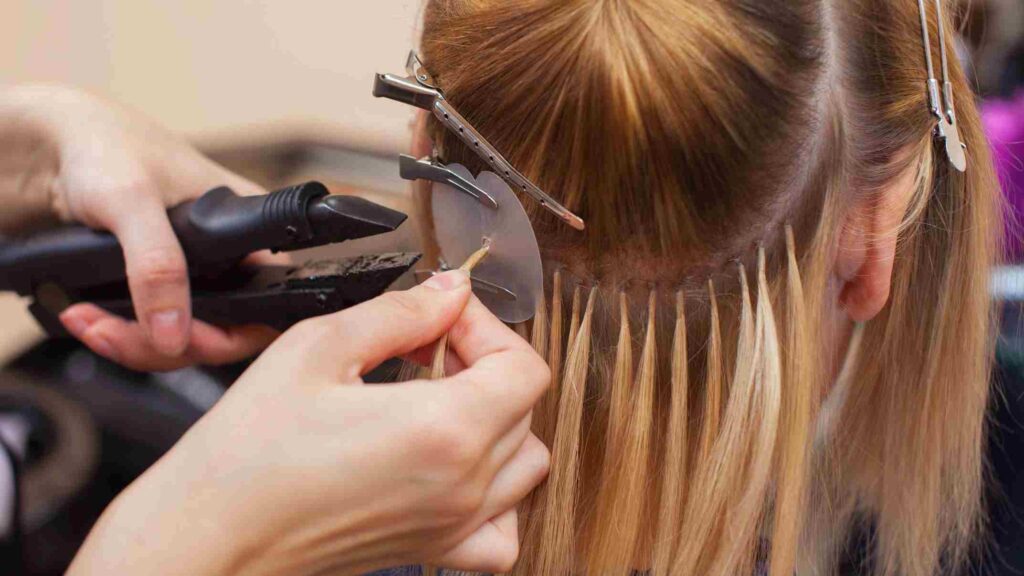
- Incorrectly attached extensions might exert an excessive pull on your real hair, triggering tension and stress that break and thin your hair.
- Tight or heavy extensions can induce traction alopecia, a hair loss type from follicle pulling, which could turn permanent without swift action.
- Overly tight extensions can thwart natural hair growth by stressing and deactivating hair follicles.
- Mismatched or poorly integrated extensions can stand out, causing unnatural contrast and disrupting your look.
- Permanent Hail Loss Risk: Severe cases of incorrect installation can result in permanent hair loss due to prolonged damage to hair follicles.
6. Incorrect installation may lead to repeated hot tool styling for blending, resulting in dryness and brittle strands.
7. Beware of Chemicals: Some extension types need chemical adhesives that can harm hair, leading to dryness, breakage, and even allergic reactions.
8. Improper extensions can trap moisture and bacteria, leading to scalp infections that itch, redden, and might induce hair loss.
9. Poor attachment can weaken natural hair, making it susceptible to breakage, especially if extensions are too heavy.
10. Heavy extensions stress follicles, slowing hair growth as they weaken from the constant tension.
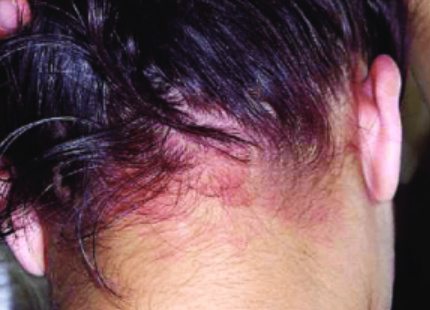
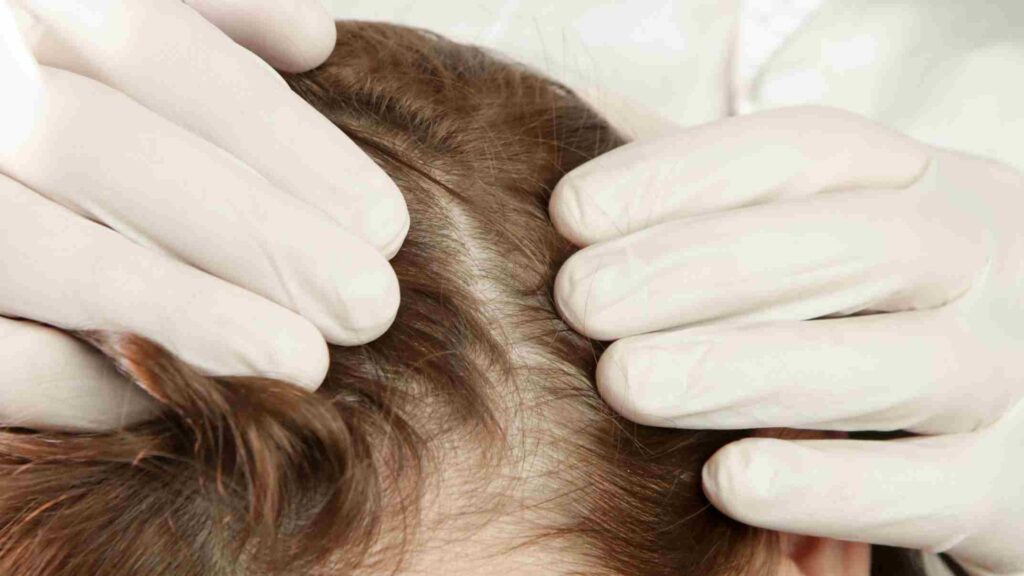
11. Materials in some extensions can trigger allergies if improperly installed, causing itching, redness, and swelling.
12. Scalp Irritation: Badly installed extensions can inflame the scalp, causing discomfort, itching, and sensitivity.
13. Detangling Woes: Improper installation can tangle extensions with real hair, leading to breakage during detangling.
14. Headache Inducer: Heavy or tight extensions can induce tension headaches from prolonged pulling on the scalp.
15. Thin Hair Trouble: Extensions strain follicles, potentially leading to thinning as they lose strength.
An Alternative to Hair Extensions for Thin Hair
If you have weak and thin hair and are unsure about using hair extensions, consider exploring hair toppers as an alternative. Learn more about these incredible hairpieces HERE!
